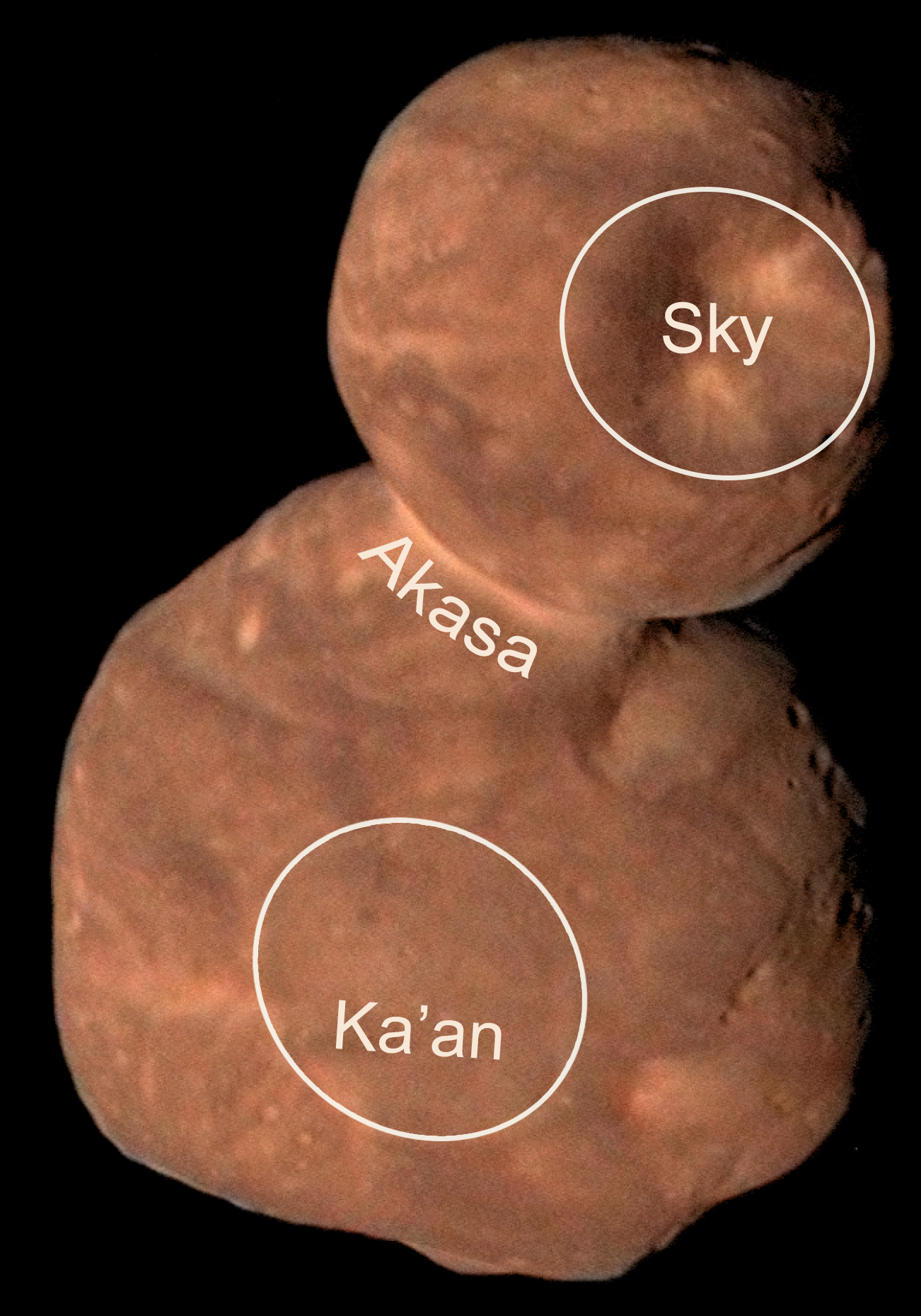The icy 'space snowman' Arrokoth in deep space just got names for its best features
Meet Sky, Akasa and Ka'an.

The map of a distant, lobe-shaped object called Arrokoth (2014 MU69) now has official names to accompany the images from NASA's New Horizons spacecraft.
After the spacecraft zoomed by the lobe-shaped world in 2019, managers of the mission — most famous for its flyby of Pluto four years before — announced the proposed feature names were approved by the International Astronomical Union.
The names closely follow the theme of the name "Arrokoth," which means "sky" in the Powhatan/Algonquin Native American language. (Algonquin territory also includes parts of Canada, where such populations are usually called "Indigenous" or "First Nations.")
"Naming these features on Arrokoth is a milestone that the New Horizons team is very proud to reach," Alan Stern, the New Horizons mission's principal investigator at the Southwest Research Institute in Colorado, said in a statement from Johns Hopkins University Applied Research Laboratory, which built and operates the spacecraft.
"It's a significant step in our discovery and exploration of this ancient object," Stern added of the naming, "in a distant region of the solar system we're just beginning to learn about."
Destination Pluto: NASA's New Horizons mission in pictures
The names focus on three prominent features on the the 22-mile (35-kilometer) long world: a near-circular arc on the larger lobe of Arrokoth, the "neck" or joining area between the lobes, and a large crater located on the smaller lobe.
Get the Space.com Newsletter
Breaking space news, the latest updates on rocket launches, skywatching events and more!
The arc will be named "Ka'an," the word for "sky" in the Yucatec Mayan language spoken in parts of the Mexican Yucatan Peninsula and Belize. "It also resembles the word for 'snake' in this language — 'kan' — and both terms derive from the classical Mayan word, 'chan,'" JHUAPL stated. (Snakes were often associated in Mayan paintings with the sky, or heaven.)

The neck is named "Akasa," the word for sky in Bengali (Bangla), and derived from similar words in Sanskrit (ākāśam), Nepali (akās), Malayalam (ākāśaṃ), Oriya (akaśô), Sinhalese (ākāśaya), Tamil (ākāyam) and Telugu (ākāśamu).
Lastly, the large crater is named "Sky," in English. (During the flyby, the nickname for this crater was "Maryland," where JHUAPL is located.)
New Horizons remains in excellent health, and the team is scanning the region for a longshot third flyby that may take place in the 2030s. The challenge in planning such a flyby, Stern said in a mission update in 2021, is that the Kuiper Belt is so thinly populated that objects are hard to find.
Follow Elizabeth Howell on Twitter @howellspace. Follow us on Twitter @Spacedotcom and on Facebook.
Join our Space Forums to keep talking space on the latest missions, night sky and more! And if you have a news tip, correction or comment, let us know at: community@space.com.

Elizabeth Howell (she/her), Ph.D., was a staff writer in the spaceflight channel between 2022 and 2024 specializing in Canadian space news. She was contributing writer for Space.com for 10 years from 2012 to 2024. Elizabeth's reporting includes multiple exclusives with the White House, leading world coverage about a lost-and-found space tomato on the International Space Station, witnessing five human spaceflight launches on two continents, flying parabolic, working inside a spacesuit, and participating in a simulated Mars mission. Her latest book, "Why Am I Taller?" (ECW Press, 2022) is co-written with astronaut Dave Williams.









